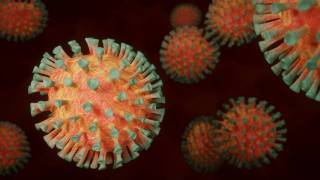$30 Million Funding Empowers All-in-One Vaccine Candidate to Tackle Future Coronaviruses

As of early July 2022, uncertainty persists as SARS-CoV-2 coronavirus mutations continue emerging. According to the World Health Organization, the Omicron BA.x variants are now dominant worldwide.
There is a clear need for strategies to tackle emerging variants and protect populations against potential future threats to human health, says vaccine researchers from the University of Oxford and Caltech.
A new consortium announced on June 5, 2022, aims to address these issues by establishing the first-in-human clinical proof of concept for a new vaccine design.
The consortium brings together researchers from the University of Oxford and Caltech to collaborate with deep tech innovation organization CPI and industrial biotechnology company Ingenza Ltd (Caltech-CPI-Oxford-Ingenza).
The Coalition for Epidemic Preparedness Innovations (CEPI) will partner with the consortium and has announced up to US $30 million to fund pre-clinical studies, GMP manufacturing, and Phase 1 trial based on this technology.
The vaccine will target both SARS-CoV-2 and several related bat viruses which have the potential to spread to humans. It builds on technologies developed by the Molecular Immunology Group at the University of Oxford and by the Bjorkman Group based at Caltech – led by Professor Alain Townsend at the MRC Human Immunology Unit and Professor Pamela Bjorkman, respectively.
In contrast to many existing vaccine designs that use mRNA or a viral vector to present sections of the spike protein of a single type of virus to the immune system, this new vaccine will use protein nanoparticles containing a protein ‘glue’ to attach related antigenic sections of the spike proteins from eight different viruses. By incorporating a ‘mosaic-8 vaccine’ design created at Caltech, these nanoparticles would favor immune responses to the shared parts of each type of coronaviruses within a single vaccine.
Evidence published today in Science by the researchers demonstrates that this vaccine technology elicits protective immune responses against SARS-like viruses but also against some coronaviruses not presented in the trial vaccine. This suggests that the technology could protect against future novel SARS-CoV-2 variants and as-yet-undiscovered coronaviruses with the potential to spill over from animal populations.
Alain Townsend, Oxford Lead of the consortium, Professor of Molecular Immunology at the MRC Weatherall Institute of Molecular Medicine, University of Oxford, said:
‘The evolution of this consortium is an example of collaborative science at its best. We had been deeply impressed by the power of the “glue” for sticking proteins together developed by Mark Howarth (Biochemistry Oxford) and derived from his beautiful basic science investigations of the Streptococcus pyogenes bacterium.'
‘Together, we used this technology to make a prototype nanoparticle SARS-CoV-2 vaccine that induced highly potent responses in preclinical studies.'
‘Through connections made by Ian Wilkinson (Absolute Antibody), we joined with colleagues at Ingenza and CPI who succeeded in making a fully functional version of the vaccine produced in microbes, thus reducing the cost of production. In addition, we have been collaborating with Prof. Pamela Bjorkman and the Caltech team, who had independently developed the brilliant concept of the mosaic version of the vaccine and are excited to continue working with this world-class consortium.’
The consortium partners are committed to equitable access to the project's outputs.
Dr. Jack Tan, Project Manager (Oxford) of the consortium, Senior Postdoctoral Scientist at the MRC Weatherall Institute of Molecular Medicine, said:
‘We are delighted to work with CEPI to further this nanoparticle technology to produce efficacious, low-cost, infrastructure-independent vaccine that will be accessible to low- and middle-income countries.’
Dr. Richard Hatchett, CEO of CEPI, commented in a press release issued on July 6, 2022, ‘There have already been three serious coronavirus epidemics or pandemics in the 21st century – and COVID-19 continues to have a devastating impact on the world’s health, society, and economy. Creating vaccines that could provide broad protection against emerging COVID-19 variants and future coronavirus threats would not only help mitigate the damaging effects of another COVID-19-like pandemic, but it could also help reduce the time taken and funding spent continually updating vaccine formulations.
‘That’s why we are delighted to partner with this CPI-led research consortium to build on Wellcome Leap’s initial investment to further advance this pioneering mosaic nanoparticle vaccine technology that, if successful, could work towards consigning the threat posed by coronaviruses to the history books.’
The consortium aims to commence a Phase 1 trial in 2024, led by the Oxford Vaccine Group.
PrecisionVaccinations publishes fact-checked, research-based news curated for mobile readership.
Our Trust Standards: Medical Advisory Committee
























